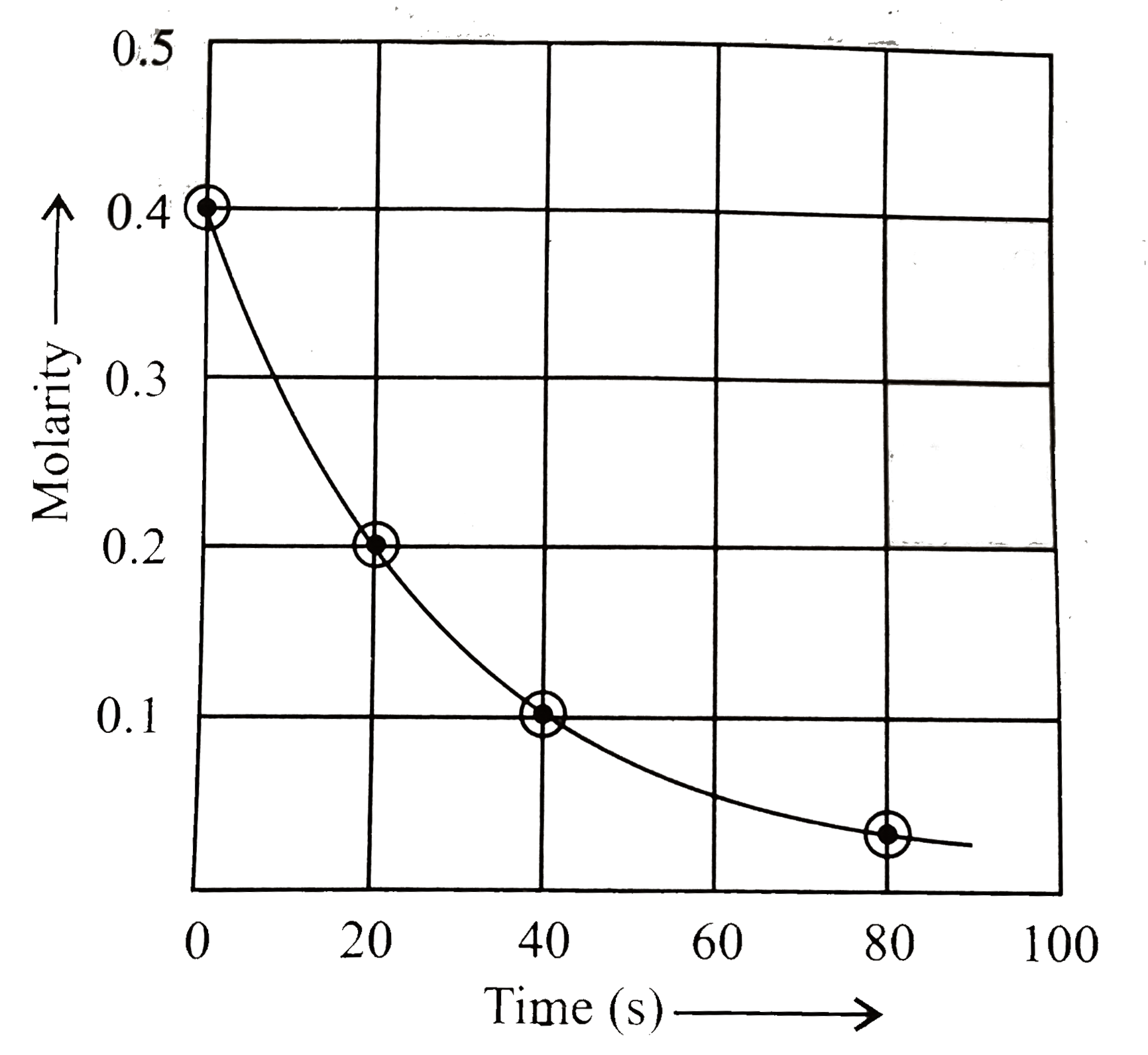For the reaction: aA+bB→cC+dD
Rate =dxdt=−1ad[A]dt=−1bd[B]dt=1cd[C]dt=1dd[D]dt
The rate of formation of SO3 in the following reaction 2SO2+O2→2SO3 is 100g−1min. Hence the rate of disappearance of O2 is
2g−1min
20g−1min
200g−1min
50g−1min
The correct Answer is:B
For the given reaction
−d[O2]dt=12d[SO3]dt
d[SO3]dt=100g−1min=10080mol−1min
∴−d[O2]dt=12(10080)mol−1min
=12×10080×32g−1min=20g−1min
Topper's Solved these Questions
- BOOK - CENGAGE CHEMISTRYCHAPTER - CHEMICAL KINETICSEXERCISE - Exercises Multiple Correct34videos
CHEMICAL KINETICS
- BOOK - CENGAGE CHEMISTRYCHAPTER - CHEMICAL KINETICSEXERCISE - Exercises Single Correct177videos
CHEMICAL KINETICS
- BOOK - CENGAGE CHEMISTRYCHAPTER - CHEMICAL KINETICSEXERCISE - Ex4.4 Objective10videos
CHEMICAL KINETICS
- BOOK - CENGAGE CHEMISTRYCHAPTER - CARBOXYLIC ACIDS AND THEIR DERIVATIVESEXERCISE - Exercises Archives (Analytical And Descriptive)34videos
CARBOXYLIC ACIDS AND THEIR DERIVATIVES
- BOOK - CENGAGE CHEMISTRYCHAPTER - COORDINATION COMPOUNDSEXERCISE - Archives Subjective18videos
COORDINATION COMPOUNDS
Similar Questions
For a reaction of the type Aa+bB→products
(−)d[A]dt is equal to
(A) −d[B]dt
(B) −bdd[B]dt
(C) −ab×d[B]dt
(D) −ba×d[B]dtView SolutionFor the reaction: aA+bB→cC+dD
Rate =dxdt=−1ad[A]dt=−1bd[B]dt=1cd[C]dt=1dd[D]dt
For reaction 3BrOɵ→BrOɵ3+2Brɵ, the value of rate constant at 80∘C in the rate law for −d[BrOɵ]dt was found to be 0.054Lmol−1s−1. The rate constant (k) for the reaction in terms of d[BrOɵ3]dt isView Solution
Knowledge Check
- Question 1 - Select One
The rate of formation of SO3 in the reaction
2SO2+O2→2SO3
is 100 g min−1 Hence rate of disappearance of O2 isA50 g min−1B100 g min−1C20 g min−1D40 g min−1 - Question 2 - Select One
For the reaction: aA+bB→cC+dD
Rate =dxdt=−1ad[A]dt=−1bd[B]dt=1cd[C]dt=1dd[D]dt
A reaction follows the given concentration-time graph. The rate for this reaction at 20s will be
 A4×10−3Ms−1B1×10−2Ms−1C2×10−2Ms−1D7×10−3Ms−1
A4×10−3Ms−1B1×10−2Ms−1C2×10−2Ms−1D7×10−3Ms−1 - Question 3 - Select One
For the reaction: aA+bB→cC+dD
Rate =dxdt=−1ad[A]dt=−1bd[B]dt=1cd[C]dt=1dd[D]dt
In the following reaction,
xA→yB
log.[−d[A]dt]=log.[d[B]dt]+0.3
where negative isgn indicates rate of disappearance of the reactant. Thus, x:y is:A1:2B2:1C3:1D3:10
For differential rate law
+2dAdt=−13dBdt=+14dCdt=−12dDdt
Chemical reaction would beView SolutionThe rate of the reation is expressed in different way as followed :
−1m.d[A]dt=+1nd[B]dt=−1pd[C]dt=+1qd[D]dt
The reaction isView SolutionThe rate and mechamical reaction are studied in chemical kinetics. The elementary reactions are single step reaction having no mechanism. The order of reaction and molecularity are same for elementary reactions. The rate of forward reaction aA+bB→cC+dD is given as:
rate=(dxdt)=−1ad[A]dt=−1bd[B]dt=1cd[C]dt=1dd[D]dt or expression can be written as : rate =K1[A]a[B]b−K2[C]c[D]d. At equilibrium, rate =0. The constants K,K1,K2 are rate constants of respective reaction. In case of reactions governed by two or more steps reaction mechanism, the rate is given by the slowest step of mechanism.
The rate of formation of SO3 in the following reaction,
2SO2+O2→2SO3 is 10gsec−1
The rate of disappearance of O2 will be:View SolutionThe rate and mechanism of chemical reactions are studied in chemical kinetics. The elementary reactions are single step reactions having no mechanism. The order of reaction and molecularity are same for elementary reactions. The rate of forward reaction aA+bB→cC+dD is given as :
rate = =(dxdt)=−1ad[A]dt=−1bd[B]dt=1cd[C]dt=1dd[D]dt or rate =K[A]a[B]b. In case of reversible reactions net rate expression can be written as : rate =K1[A]a[B]b–K2[C]c[D]d. At equilibrium, rate = 0. The constants K,K1,K2, are rate constants of respective reaction. In case of reactions governed by two or more steps reactions mechanism, the rate is given by the solwest step of mechanism.
For the reaction : aA→bB,
log[−dAdt]=log[dBdt]+0.6, then a:b is :View SolutionThe rate of a reaction is expressed in different ways as follows
+12d[C]dt=−15d[D]dt=+13d[A]dt=−d[B]dt
The reaction isView Solution

